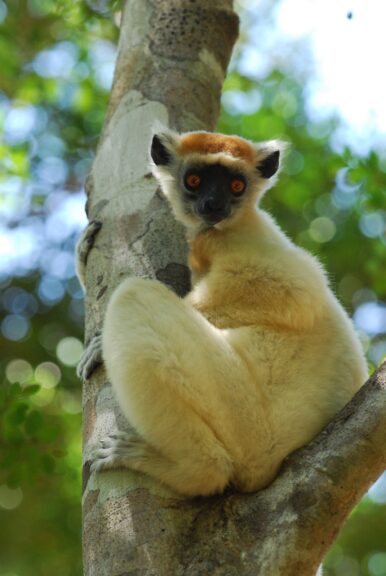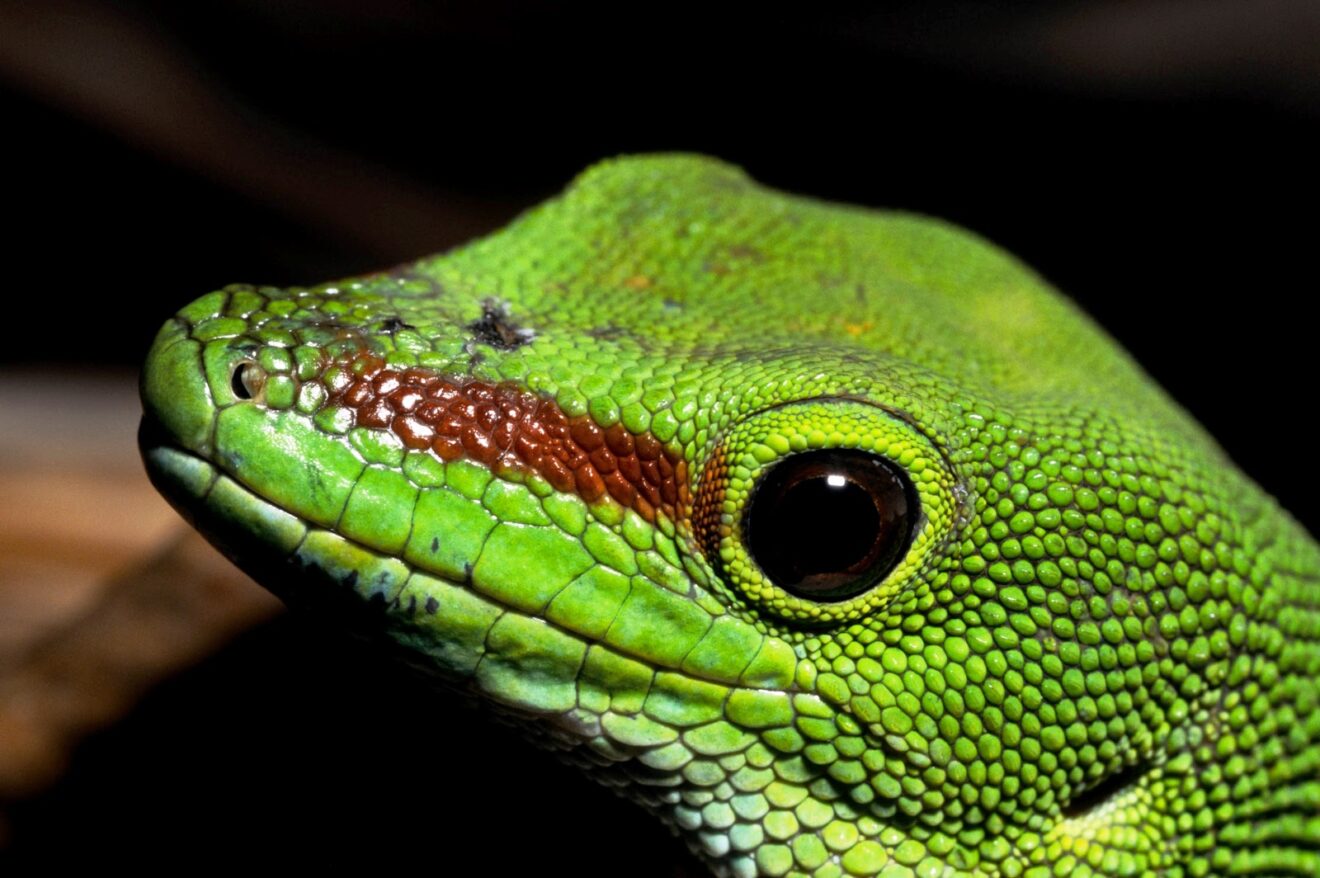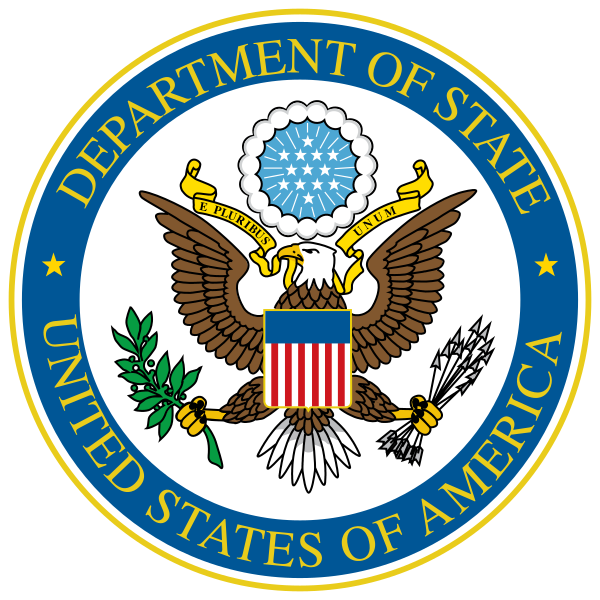
Between Diana and Sava, in the district of Voméhar, we can find the protected forest of Loky-Manambato, which is home to around 1,000 critically endangered golden-crowned tattersall’s sifakas. The reserve is managed by a local NGO. There is simple camping with huts near Daraina, a town known for gold mining. It is accessed from Ambilobe or Vohemar.
Loky-Manambato is a protected region in the north of Madagascar, which got its status in 2008 and covers an area of 250,000 ha. It is bordered by the Loky River to the north and the Manambato River to the south, and by the Indian Ocean to the east. Since 2015 the landscape is under permanent protection and is financed by the Foundation for Protected Areas and Biodiversity of Madagascar. The park includes the archipelago of the islets of Nosy Ankao near the coast, which can be visited by boat coming from Vohémar.
Loki-Manambato has a very rugged relief represented by a succession of hills and valleys, and a narrow coastal strip. The highest peak is the summit of Ambatosambo which is 1,171 meters above sea level. The park has a sub-arid tropical climate with a low atmospheric humidity. The average annual temperature is 25.2°C. August is the coldest month and February the warmest. From November to April is the rainy season, followed by a dry period from May to November with September and October being the driest months. In the zone of Binara there is a microclimate with a higher humidity and there is a dense humid forest.

The Loky Manambato Protected Area represents various habitats and species in the SAVA Region with an exceptional biodiversity which has several ecosystems: dense dry forest, humid forest and coastal forest; permanent and temporary continental lakes; marine ecosystems and mangroves. These different types of ecosystems with these diverse species of plants and animals with many endemic species that are of significant importance for biodiversity conservation locally, nationally and globally. The plant formations contribute to the retention of the soil against erosion. The floristic composition is generally rich and several species are exploited there for various uses. The 5 main forest blocks of the Protected Area provide environmental goods and services for the populations but also in the maintenance of natural processes.
There are conservation efforts for the fish populations, which are being done in dialogue with the locals. This is based on the degree of endemicity, the conservation status of the species and the threats. There are three species which need protection: Pachypanchax varatraza, Paratilapia polleni and Ptychochromis loisellei. The Pachypanchax varatraza is endangered and threatened by gold mining. Paratilapia polleni suffers from permanent competition with introduced fish and the continued degradation of its habitat. Ptychochromis loisellei is listed as vulnerable and continues to decline due to various pressures and threats.
The biodiversity of Loky Manambato deserves to be preserved for its biogeographical interest, its importance in the conservation of gene pools and because it is a set of forest patches between humid and dry forest, which is a refuge for many species. The forest blocks governed by varied ecological conditions represent a kind of complex natural laboratory where the phenomenon of speciation probably tends towards the appearance of forms endemic to the region. With regard to herpetofauna, Analamazava represents a privileged area because it hosts almost all of the threatened species and is still healthy in terms of the integrity and viability of the ecosystems.
The area is under constant threats such as gold mining, lemur hunting and logging and is a priority for conservation. It forms a unique site for birds, where the species of the West and that of the East are concentrated. We can find threatened species such as Anas melleri and Threskiornis bernieri which are normally found in the western part of Madagascar. There are also important populations of water birds in places such as Lake Sahaka. The Binara site is a priority in terms of conservation, in addition this site is very particular because it presents a disparity of habitat (humid forest and dry forest) constituting the block of forest. The Binara forest is also important for lemurs. There are currently seven lemur species in the Binara Forest, of which four are nocturnal: Golden crowned sifaka, Northern rufous mouse lemur, Daraina sportive lemur, Sanford’s brown lemur, Amber Mountain fork-marked lemur, Crowned lemur and the Aye-aye.
If you would like to travel to Loky-Manambato, we offer tours with transport, camping and guiding to the park. Together with our guide you will go look for lemurs, birds and other animals and enjoy the beauty of the park. You can easily combine Loky-Manambato with another park such as Amber Mountains, Ankarana, Marojejy and more. Don’t hesitate to contact our agency to book a customized tour in Madagascar.













